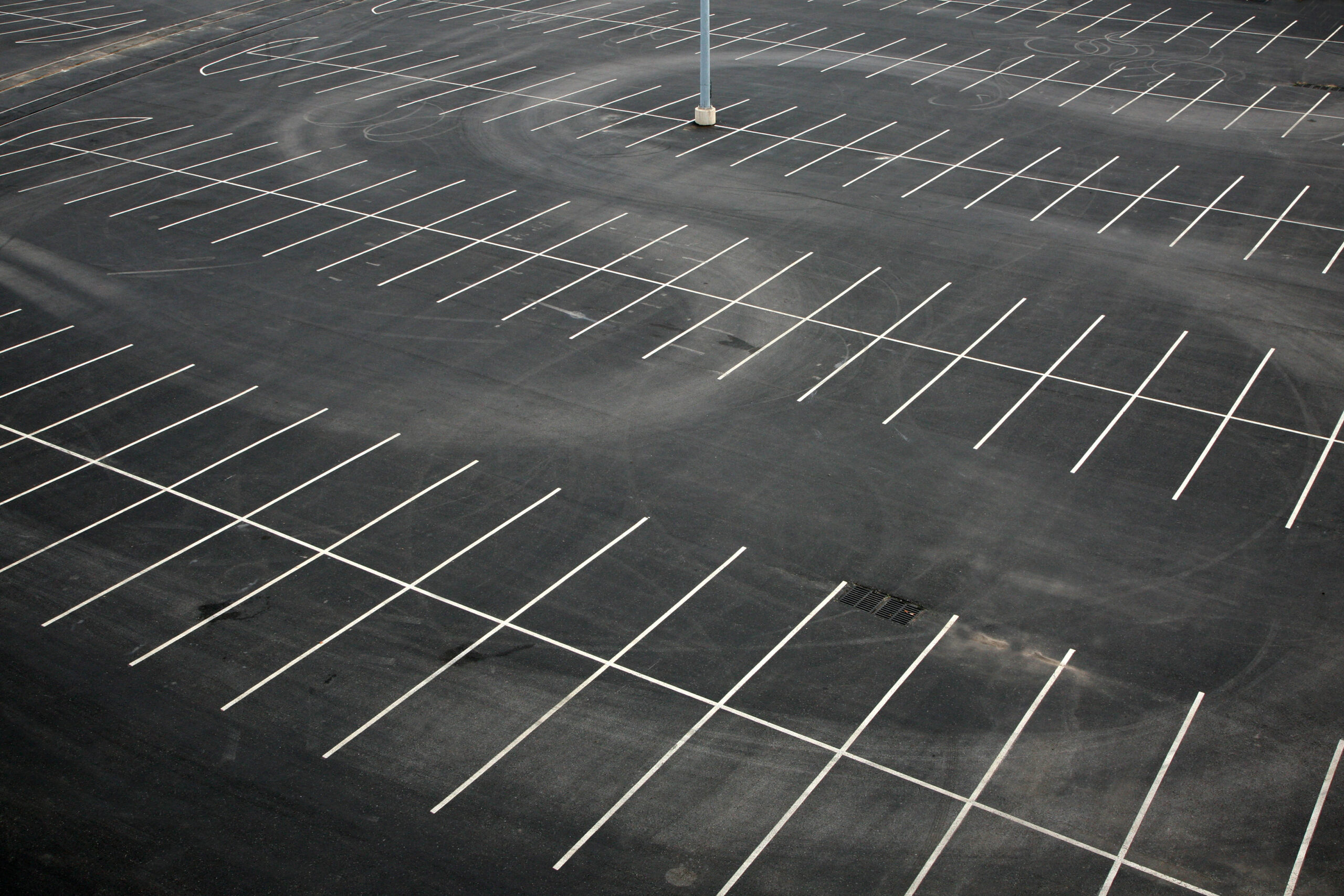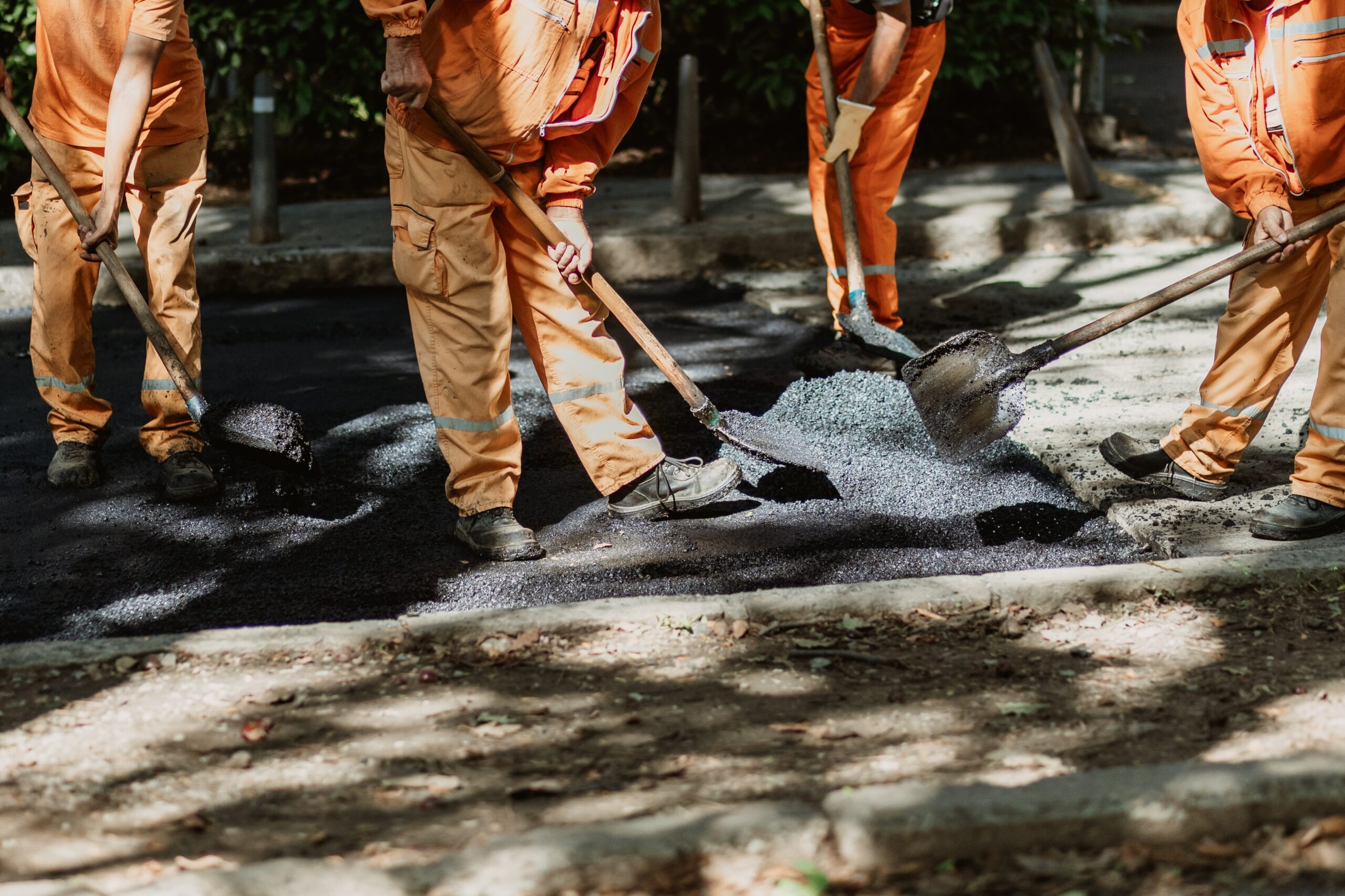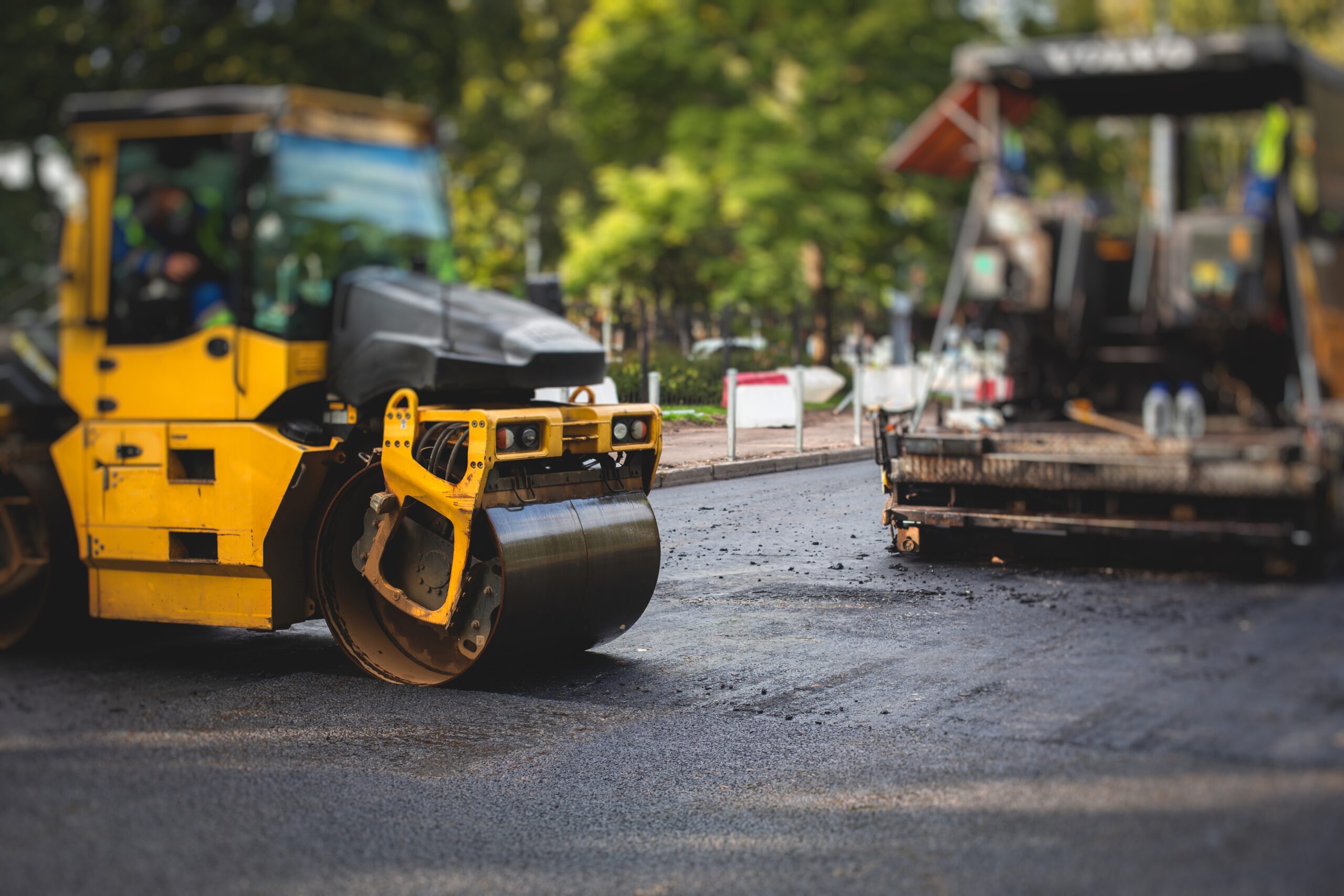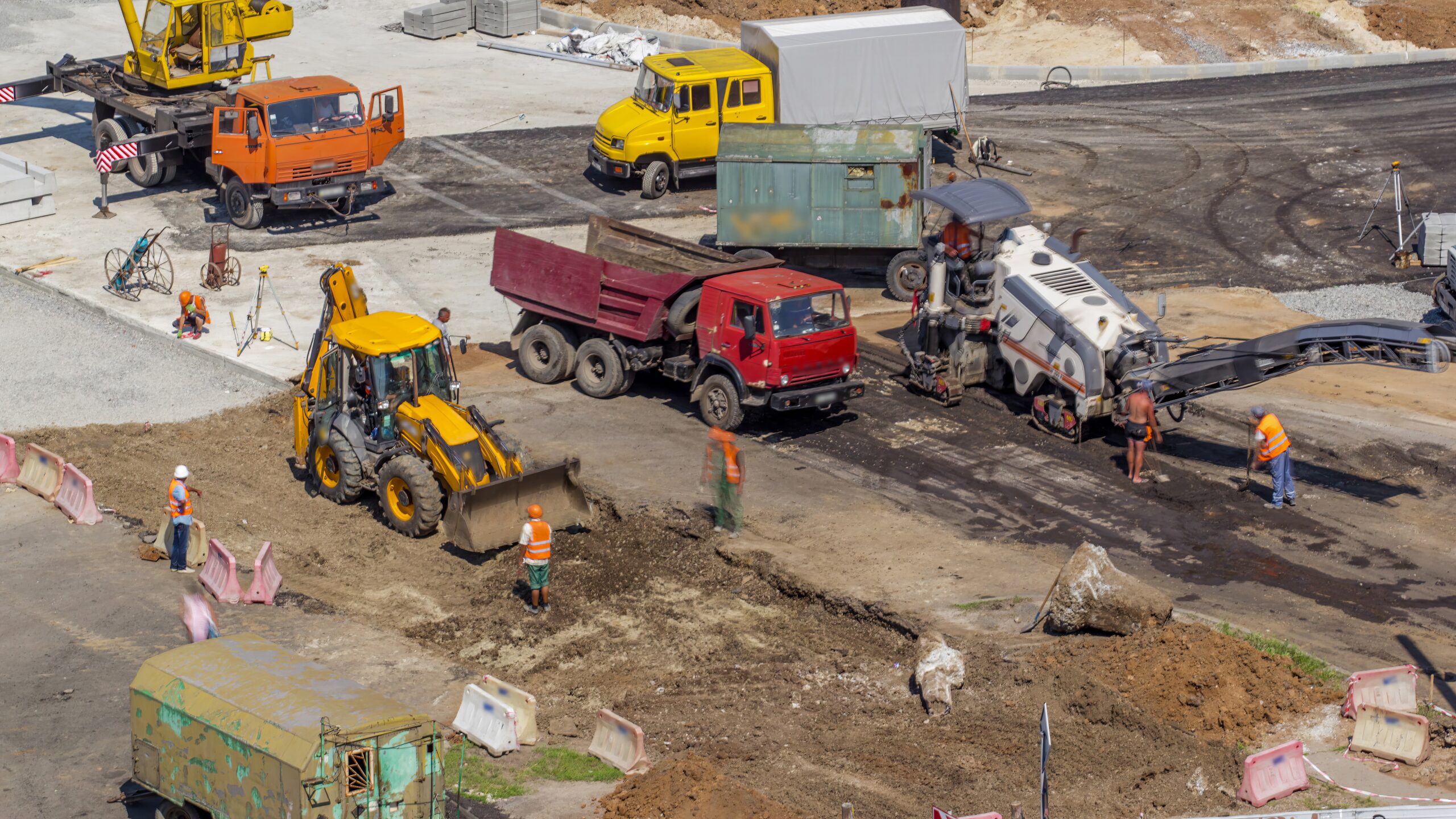
If you’ve noticed cracks, potholes, or faded lines in your parking lot, you’re not alone. The weather is one of the biggest reasons your lot starts to deteriorate. Rain, snow, heat, and cold can all take a toll on asphalt and concrete. If you’re wondering why your lot looks worse after every season change, the answer is simple: the weather is slowly damaging it.
Let’s understand why proper planning and timely parking lot maintenance can help you avoid bigger repair bills down the road.
How Seasons impact parking lots & Their solutions
Below are the different types of weather that affect your parking lot and what you can do to prevent long-term damage.
- Hot Weather: Expands and Weakens Surfaces
When the sun beats down, asphalt absorbs the heat. On very hot days, surface temperatures can reach over 120°F. This causes asphalt to soften and expand. The heavier the traffic, the more pressure is applied to the softened surface. This leads to warping, rutting, and surface fatigue. How temperature changes affect asphalt cracks shows how seasonal shifts make this problem worse. UV rays also dry out the top layer, causing oxidation. As a result, the asphalt becomes brittle and begins to crack.
Solution:
Sealcoating acts like sunscreen for your parking lot. It protects against UV damage and helps retain flexibility in the pavement. Applying a sealcoat every 2–3 years prevents the surface from drying out and cracking. Choose right asphalt mix designed to handle high temperatures. Schedule summer maintenance early to avoid heat-related issues during peak season.
- Cold Weather: Freezes and Cracks Asphalt
Cold weather is just as damaging, especially when water gets into the surface. Water finds its way into even the smallest cracks. When it freezes, it expands by up to 9%. This expansion breaks apart the pavement from the inside. Repeated freeze-thaw cycles widen the cracks and eventually create potholes. Snowplows and heavy traffic in winter only add to the damage.
Solution:
Crack filling is key before winter sets in. It keeps water out and stops the freeze-thaw cycle from doing more damage. Use rubberized crack sealants that flex with the pavement. If potholes do form, fix them with infrared patching, which bonds seamlessly with the existing surface. Preventive maintenance before the first freeze saves time and money later.
- Rain: Washes Away Protection
Rain may seem harmless, but over time, it’s a major problem. Water that gets into cracks or along the edges weakens the sub-base—the layer under the asphalt. If drainage is poor, standing water collects and pushes down on the surface. This leads to soft spots, sinkholes, and edge crumbling. In heavy rain, small issues can escalate fast.
Solution:
Proper drainage is essential. Make sure water flows away from your lot by grading the surface correctly. Clean out storm drains and gutters regularly. Install trench drains or catch basins if water tends to pool. Sealcoating vs repaving: which option saves more also plays a role, since sealing helps keep water from penetrating the surface. After any heavy rain, inspect your lot to spot early signs of erosion or damage and prevent costly repairs, following why proper drainage protects your asphalt.
- Snow and Ice: Increase Wear and Tear
Snow and ice do more than just make your lot slippery. They accelerate surface damage. Moisture freezes inside cracks and breaks the pavement apart. De-icing salts and snowplows scrape away the top layer of protection. When snow melts during the day and refreezes at night, it causes rapid expansion and contraction.
Solution:
Invest in professional snow removal. Use rubber-tipped plows to reduce scraping. Choose de-icing products that are safe for asphalt. Don’t let snow sit too long—remove it quickly to prevent moisture buildup. After snowmelt, assess the surface for new cracks or weak spots. Plan a post-winter inspection every year to catch damage early.
- Wind: Blows Debris and Dirt into Cracks
Strong winds do more than just blow dust—they carry loose gravel, branches, trash, and leaves into your parking lot. These materials often settle in corners, curbs, and drainage areas, causing clogs that lead to pooling water. Debris also gets lodged into surface cracks, making them harder to clean and seal properly. Over time, trapped moisture and decaying organic matter speed up pavement deterioration. Wind can also wear down painted lines and signage with constant abrasion.
Solution:
Schedule routine sweeping, especially during windy seasons. Use a professional sweeper to remove fine dust and dirt that brooms miss. Clean storm drains weekly to prevent blockages. Install windbreaks like shrubs or fences to reduce wind flow across open lots. Trim nearby trees to prevent branches from falling and adding to the mess.
- Humidity: Weakens Sealcoating and Slows Drying
High humidity makes asphalt and sealcoating dry much slower than usual. This delays project timelines and increases the risk of surface flaws, like bubbles or streaks. If the sealant doesn’t cure properly, it may peel off sooner or fail to provide a solid barrier. Humid conditions also promote algae, moss, or mildew growth in shady or poorly drained areas. Over time, this leads to slick surfaces and hidden damage.
Solution:
Avoid sealcoating during high humidity or when rain is in the forecast. Always check humidity levels before scheduling major repairs. Opt for a sunny, dry day to allow for even drying. In areas prone to mold or mildew, clean the surface regularly with safe detergents or pressure washing. Improve air circulation around shaded areas by trimming overgrown plants or trees.
- Hail: Causes Surface Bruising
Hailstorms can cause unexpected and significant surface damage. Large hailstones create pockmarks, chips, and tiny craters in asphalt or concrete. These small bruises trap water and debris, leading to deeper cracks over time. Repeated hailstorms reduce the smoothness of your lot and damage line striping, signage, or reflective coatings. If ignored, these dents may weaken the structure underneath.
Solution:
After any hailstorm, walk the lot to inspect for chips, dents, and damage to painted lines. Repair even small pits early to prevent water intrusion. Use patching compounds that bond tightly and resist weathering. If your property is in a hail-prone area, consider a tougher sealcoat with impact resistance. Review your insurance policy to ensure storm damage is covered, including parking surfaces.
- Sudden Storms: Create Flooding and Erosion
Flash storms bring heavy rain in short bursts, overwhelming typical drainage systems. Water collects quickly, especially in lots with poor slope or clogged drains. The force of sudden runoff erodes the edges of your lot and can break apart unsealed surfaces. These storms often wash away sealcoating, expose the base layer, and leave behind debris or sediment buildup that clogs drains.
Solution:
Install overflow drains, trench systems, or retention basins in low-lying areas. Grade the lot properly to channel water away from the surface. Before storm season, clear all drains and inspect for pooling spots. Reinforce high-traffic areas with thicker asphalt to resist washout. Reapply sealcoating each year to restore lost protection and reduce the effects of erosion.
- Seasonal Changes: Stress the Surface
It’s not just individual seasons that cause problems—it’s the shift between them. Going from hot to cold, wet to dry, and back again puts your pavement under constant stress. The asphalt expands in heat and contracts in cold. This movement weakens the surface over time. Even small cracks can become deep fissures if left untreated during seasonal changes.
Solution:
Create a year-round maintenance plan. Don’t wait until something breaks—schedule seasonal checkups. In spring, inspect for winter damage. In fall, prepare for freeze cycles. Apply sealant and fill cracks before cold weather hits. This proactive approach extends your pavement’s life and helps you budget repairs more effectively.
Protect Your Investment Year-Round

Weather doesn’t take a break, and neither should your parking lot care. Whether it’s the heat of summer or the ice of winter, your pavement faces constant threats. But you can stay ahead with routine inspections, preventive treatments, and fast repairs. Well-maintained lots not only last longer but also keep customers safe and your property looking professional.
At Asphalt Coating Company, we specialize in weather-ready parking lot maintenance. Our experienced team handles everything—sealcoating, crack filling, snow removal, and drainage solutions. We help property owners protect their investment all year long. Contact us today for a free estimate and keep your parking lot strong, safe, and ready for whatever the forecast brings.



